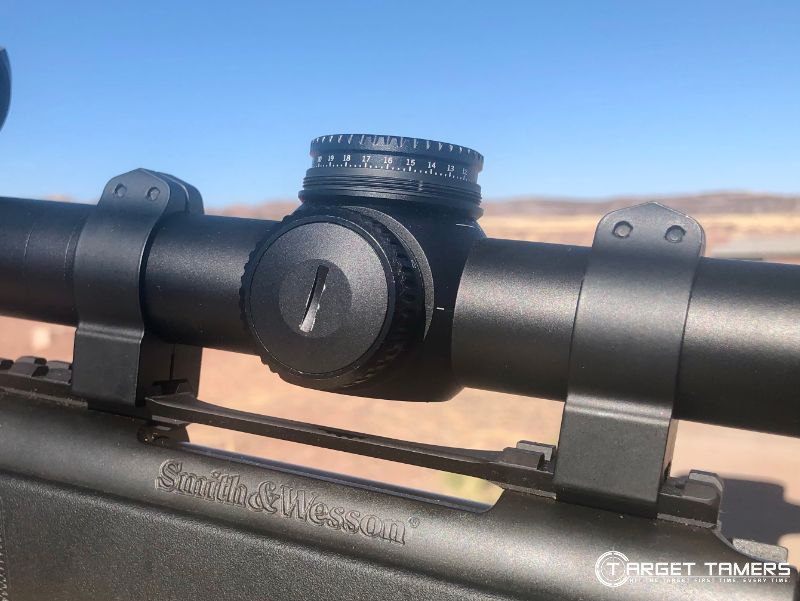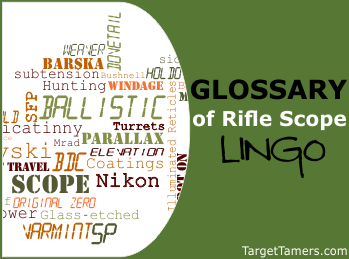
There's no faster and better way to feel like a rookie and an amateur than to shop the sports optics market with no knowledge of what anything means - and we've all been there before.
Variable power, parallax, Quantum optical systems... it all sounds like something out of a sci-fi flick. With savvy marketing techniques and ingenious new ways to sell the same old feature, there's always a new word to learn here and there even as you become a seasoned hunting optics guru.
But, if you're still a newbie keen on learning rifle scope jargon so that you can tell whether or not you're getting a good deal on your next buy, "Welcome". From one hunter to another, let's get you broken in.
Rifle Scope Lingo
0-10 | A | B | C | D | E | F | G | H | I,J,K | L | M | N | O | P | Q | R | S | T | U | V | W | X,Y | Z
0-10
1 inch tube - This refers to the diameter size of the erector tube. Most conventional rifle scopes are in the 1 inch size.
30 mm tube - This refers to the diameter size of the erector tube. More high-end rifle scopes are sporting a larger size to provide the benefit of increased internal adjustment travel. (See also Internal Adjustment Travel)
3X - While this looks like this could mean 3X fixed power, it actually refers to three times the magnification power. For example, a model advertised with either 3X or 4X power means the lowest magnification setting will be multiplied 3 or 4 times to provide you with the highest setting possible. A 3X scope could be a 3-9X model (3x3=9). A 4X scope could be a 4-16X model (4x4=16). Learn more about what the numbers on a rifle scope mean here.
4C/4K - Meopta's reticle options with thick 3, 6, and 9 o'clock cross hairs and a fine 12 o'clock cross hair. They're also illuminated. See our Meopta Rifle Scope reviews for a more detailed look.
A
Accu-Range - Redfield's basic 500 yard ballistic reticle. (See also Ballistic Reticle)
AO - Ajustable Objective. This is one type of parallax correcting feature. Rotating the AO that's located at the front of the objective bell can help focus the scope and eliminate parallax issues. (See also Side Focus and Parallax)
ASV+ Elevation - This is the ballistic turret technology that belongs to world-class optics brand, Carl Zeiss. See our Zeiss Rifle Scope reviews for all-encompassing info on their high-end scope features.
B
Ballistic Plex - This is Burris' name for their simple duplex style ballistic reticle. (See also Ballistic Reticle)
Ballistic Program - This is typically an online program or tool that buyers and users of a brand's rifle scope can use to get holdover values for their scope and cartridge. Additional information such as bullet coefficient, sea level, and wind speed may be needed to provide accurate holdovers. (See also Holdover)
Ballistic Reticle - This is a reticle that can incorporate various factors to ensure you get a correct point of aim and bullet strike for long distances or shots made on an angle. Ballistic reticles use BDC technology to take into account angles, elevation, atmospheric conditions, and ammunition data. These reticles can vary in design with stadia lines along the windage and elevation cross hair, varying densities of the posts on the reticle, a "Christmas-style" design, and holdover points with dots, lines/hash marks, or open circles. (See also BDC)
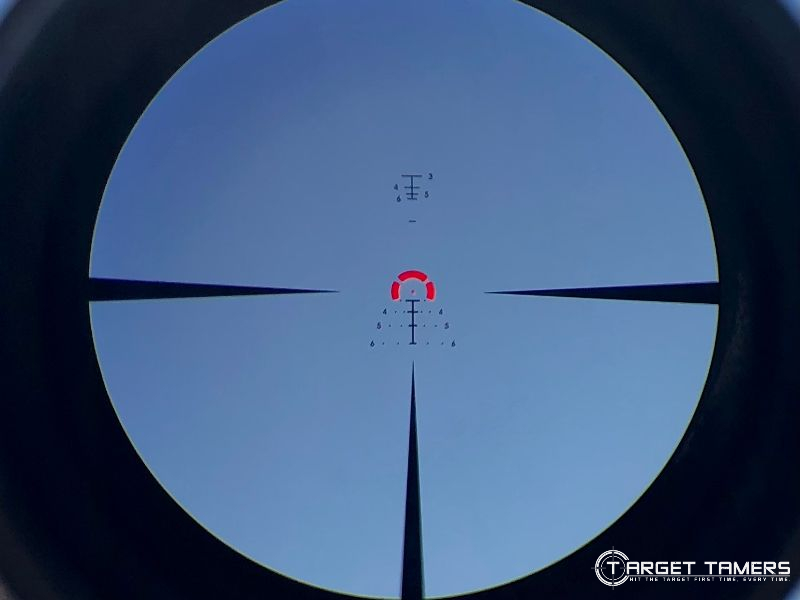
Ballistic Turret - This is a feature seen on high-end rifle scopes that allow for more than one predetermined distance to be set on the turret. Distance-gauging guesswork is eliminated and ballistic reticles are no longer a need. A return to your original zero is always a primary feature of a ballistic turret. (See Original Zero)
Ballistic X - Weaver's basic ballistic reticle. (See also Ballistic Reticle)
BAS - Leupold's Ballistic Aiming System. Integrates ballistic reticles and ballistic turrets for dead-on aim no matter what, where, and when you're hunting.
BDC - Bullet Drop Compensation. This refers to the relationship between your fired bullet, the target, and gravity. Rifle scopes can incorporate ballistic features such as a BDC reticle or ballistic turret to compensate for the effect gravity has on a traveling bullet and the effect air-resistance has on bullet velocity. Using BDC technology can allow you well-placed shots every time.
BRX/BRX Heavy - These are Swarovski's "Christmas Tree" style ballistic reticles available with their long range hunting rifle scopes.
BT - Swarovski's indication that the rifle scope model has the ballistic turret feature. (See also Ballistic Turret)
Butler Creek - This is a sports optics accessories brand that is mentioned in our rifle scope reviews. They are worthy of mentioning in this glossary since they are praised for their popular flip up caps.
C
Centerfire - Centerfire refers to almost all shot gun, rifle, and hand gun cartridges today. It also refers to the location of where the firing pin of a gun stikes the base of the bullet as a catalyst to set off a chain of events that cause the bullet to be fired. As the name implies, the pin strikes the center of the bullet where the primer is encased in a cap.
Clicks - This refers to the number of rotations of the turrets to ensure you can sight in your scope and make adjustments as necessary.
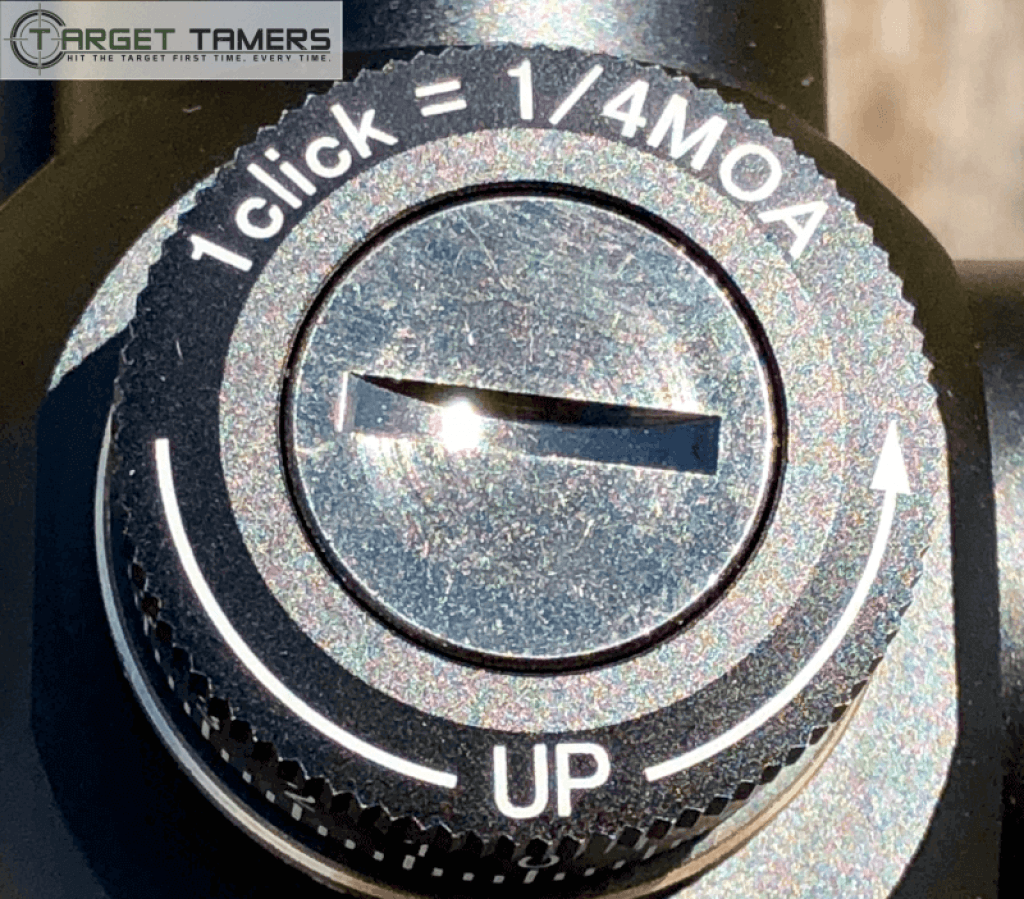
Coatings - This refers to the special chemical coating/s that are applied to the lens of a sports optic, be it rifle scopes, laser rangefinders, binoculars, and more. Typically, the more coatings they have will mean less glare, reflectivity, and a better, brighter, and crisper image.
CRS Zero Stop - Customizable Rotational Stop. Vortex integrates returning to your original zero technology into their rifle scopes. (See also Original Zero)
D
DDB - This stands for Bushnell's Dusk & Dawn Brightness multi-coated formula for scope lens. (See Coatings)
DOA - Bushnell's Dead On Accurate ballistic reticle. These reticles are available with yardage numbers that they range out to. For more info on DOA 600, Dead On Accurate at 600 yards, check out our review of the Bone Collector rifle scope.
Dovetail - This is a design groove pattern where the base is wider than the top for mounting rings and bases. This inter-locking mechanism or connection design looks just like the tail of a dove. (See also Picatinny and Weaver)
Dual X - Weaver's duplex style reticle. (See also Duplex Reticle)
Duplex Reticle - This is by far the most common style of reticle available with many conventional, affordable, and entry level rifle scopes. It typically features a reticle with cross hairs reaching to the entire edges of the field of view. As the cross hairs reach to meet like a "t" or a cross in the center, the thickness of the posts may or may not become finer. Each duplex style reticle can vary slightly from one optics brand to another.
E
EBR-1 MOA - This is the illuminated ballistic reticle that's available with the Vortex Viper PST rifle scope. (See also PST)
Elevation - This is the vertical cross hair of the reticle.
Erector Tube - This is the main tube body that houses the components of the rifle scope.
F
Fast Focus Eyepiece - This is the European style "only-a-fraction-of-a-turn" eyepiece technology that can focus-in the reticle to be sharp and crisp. Its focusing speed rate is faster than the traditional non-fast method but typically lacks the locking mechanism with the non-fast method.
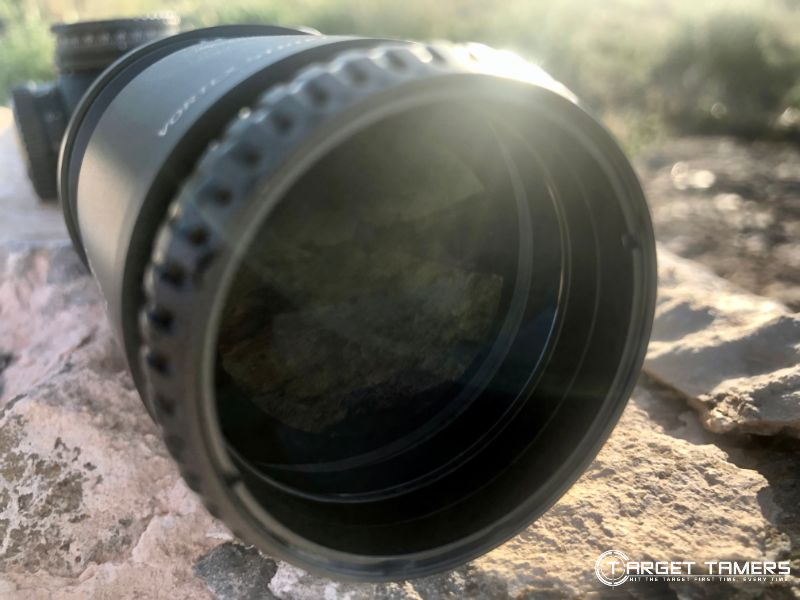
FFP - First or front focal plane indicates the position of the reticle. With FFP scopes, the subtension remains the same and the cross hairs increase in size as magnification increases. (See also Subtension)
Fixed Power - This means the magnification of the rifle scope is fixed. It doesn't have varying degrees of low to high power settings. The permanent magnification is factory set at a specific zoom.
G
G2H - This is Bushnell's long range hunting ballistic reticle with the "Christmas tree" style. (See also Ballistic Reticle)
Glass-Etched - This refers to the precise and laser-etched reticles found in tactical and high-end hunting rifle scopes.
H
Hi-Lume - This is Burris' registered trademarked fully multi-coated formula that they apply to their lens to improve your image quality. (See also Coatings)
Holdover - This is a value that's gathered using BDC technology. Knowing beforehand the distance you want to shoot at, you can get the holdover value that tells you how many clicks to make to ensure the center of your cross hairs (point of aim) is your actual intended bullet strike. (See also BDC)
HS - Hunting Shooting or Hunting Scope. Different optics companies may use one term or the other to describe the appropriate category for their rifle scope.
I, J, K
Illuminated Reticles - Many rifle scopes are being equipped with battery operated reticles that light up when activated. In hunting, this color is nearly always red. In tactical conditions, green is often another available color. The entire, part, center, or certain feature of a reticle can be illuminated.
Internal Adjustment Travel - This is the amount of room or the maximum adjustment potential the erector tube has that provides scope adjustments to be made. Larger tube bodies such as 30 mm or even 34 mm tubes can provide more internal adjustment travel to provide potential for longer distance shots.
IR - Illuminated Red. This is Barska's terminology to indicate that the rifle scope has a red illuminated reticle. (See also Illuminated Reticles)
L
Lapping - A process of removing rough and uneven spots from scope rings to improve contact between the rings and the rifle scope. Learn the process of lapping scope rings here.
Light Transmission - This is referring to how much light that's collected in the objective bell to be transmitted to the eyepiece to your human eyes. The percentage that's often advertised with optics companies typically refers to the wavelength of light that's usable and visible at one time of the day and with one lens. Look for realistic numbers that are within the color spectrum that's usable to your eyes with lens technology on all lens within the scope. This review has good information on light transmission and Index Matched Lens Systems.
LotuTec - Zeiss' proprietary glass protectant, repellant, and anti-scratch formula.
LR - Long Range
LRHS - Bushnell: Long Range Hunting Scope.
M
MAG-View - This is Vortex's fiber optic reference point that provides an easily-seen marking for what power or magnification setting that you're on.
MeoBright - This is Meopta's fully multi-coated lens formula that produces industry-leading light transmission capacity. You'll have to read about it here to see what it is. (See also Coatings)
MeoShield - This is Meopta's lens protectant and surface hardener.
MIL/Mrad – Milliradians of Angle. A measurement system that's used to determine the correct elevation and windage adjutments to sight in your scope. Typically found on European based optics.
MOA – Minute of Angle. A measurement system that's used to determine the correct elevation and windage adjustments to sight in your scope. Typically found on American based optics.
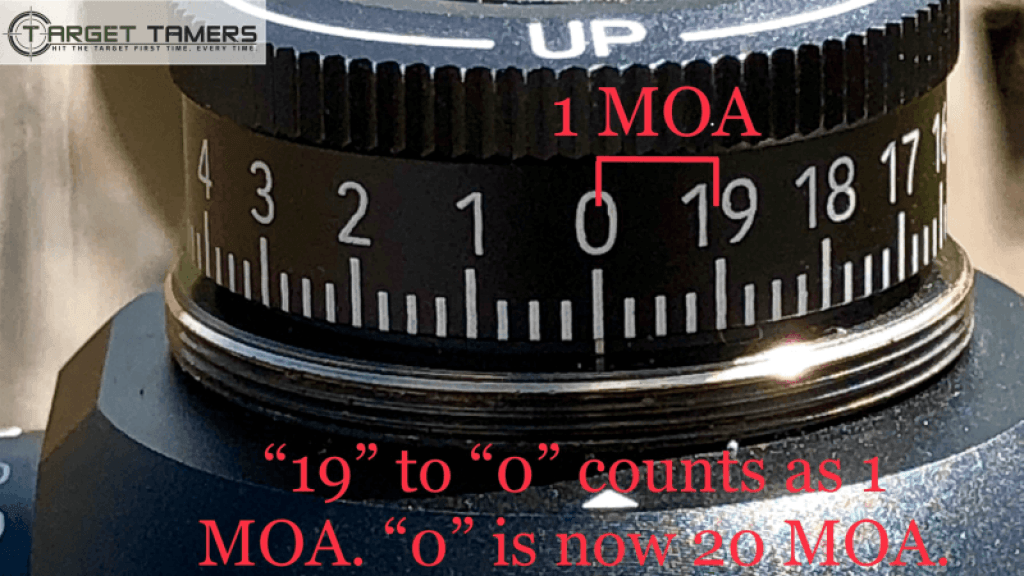
MOAR 20 MOA/MOAR-T - These are a couple of the NightForce scopes ballistic reticle options available with elevation and windage markings for long range hunting holdovers. (See also Ballistic Reticle)
Multi-X - Bushnell's simple duplex reticle. (See also Duplex Reticle)
N
NikoPlex - Nikon's version of their simple duplex reticle. (See also Duplex Reticle)
Non-fast Eyepiece - This is the American style non-fast focus eyepiece that you have to thread onto the scope to get the right focus for your vision. It has a locking mechanism to prevent it from being accidentally knocked out of focus.
O
Original Zero - This is the distance you sighted your scope for. Zero reset features are popular for getting you back to your original zero. When dialing up/making scope adjustments, you don't need to remember how many clicks you made and how to get back. Turn the turret all the way back till it stops and you're back to your 100 yard or "x" yard zero.
P
Parallax - This can be a common problem when ranging out beyond 10X on a rifle scope. The reticle and target are on different focal planes and it will appear to move rather than stay on target when you shift your head or eye position. See our article on Rifle Scope Parallax here for more info. (See also AO and Side Focus)
Picatinny - This is a tactical rail that's designed with transverse slots on a mounting base to attach a scope to the barrel of a rifle. Because of its 5 mm cross slot intervals, it's also the most versatile and compatible mounting system to date. (See also Weaver and Dovetail)
Plex - This is Burris' name for the duplex reticle. (See also Duplex Reticle)
Power - In the rifle scope reviews this word is interchangeable with magnification. This indicates the zooming range of the scope and is known by the "X" that follows a model's number sequence. Find out how much magnification you need here.
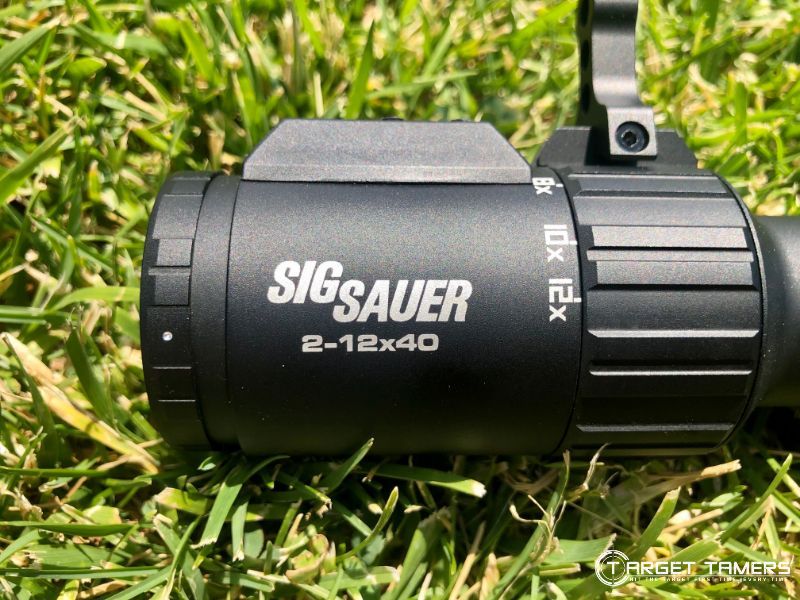
Precision-Glide Erector System - Vortex uses glass components with a mechanism system that makes for transitions between magnification settings a smooth visual experience.
PST - Precision Shooting Tactical. This is Vortex's Viper tactical line of rifle scopes. If you want to see how it would hold up for hunting, please check out this review for more details.
Q
QTA - Simmon's Quick Target Acquisition fast focus eyepiece. (See also Fast Focus Eyepiece)
Quantum Optical System - This is Leupold's state-of-the-art technology to produce excellent glass and image quality. For more on this system, check out this article.
Quick Focus Eyepiece - Nikon's fast focus eyepiece for instant target acquisition and reticle focus. (See also Fast Focus Eyepiece)
R
Remote Cable Switch - This feature belongs to the Burris Eliminator III rifle scope. A remote control can activate the laser rangefinding capabilities of this rifle scope. For more on this feature or the Eliminator III, check it out here.
RD - Meopta's RedZone Illuminated Reticle System - read about it here. (See also 4C/4K)
Rimfire - Rimfire refers to a type of bullet. It also refers to the location of where the firing pin of a gun strikes the base of the bullet as a catalyst to set off a chain of events that cause the bullet to be fired. As the name implies, the pin strikes the rim of the bullet. Example, .22 ammo.
RS - Rifle Scope - choosing the right scope for your firearm is very important.
RTA - Rapid Target Acquisition is Redfield's technology that enables you to get sharp image quality along with the non-fast focus eyepiece.
S
Schott HT Glass - This is Zeiss' proprietary High Transmission glass with T coatings that earns them their legendary glass reputation. For more on what Zeiss has to offer, see our extensive Zeiss rifle scope reviews (which you can find here) for full details. (See also Coatings)
SFP - The term second focal plane can be used interchangeably with rear focal plane. This more commonly-used design has cross hairs that remain the same size as magnification increases. Due to this system, subtension is constantly changing as the target gets larger or smaller in size as you change the power. (See also Subtension)
SG - Shot Gun
Side Focus - This is a type of parallax correcting feature. It's an external turret or dial that may or may not have distance markings on it. Rotating the dial to the correct distance can help focus the scope and eliminate parallax issues. (See also AO and Parallax)
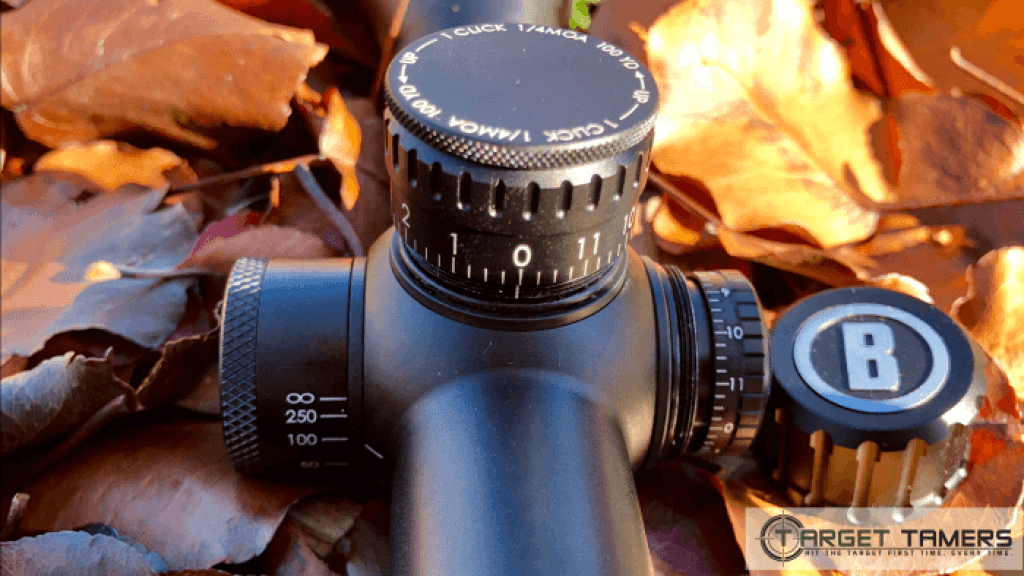
SP - Simmons' acronym for Side Parallax Adjustment. (See also Side Focus)
Spring-Loaded Instant Zero-Reset Turrets - Nikon's terminology for being able to return to your original zero without keeping track. For more on what Nikon has in store for you, check out our Nikon reviews here for more details. (See also Original Zero)
Spot On Ballistic Match Technology - Nikon's online ballistic program that provides you with holdover values. (See also Ballistic Program)
SS - Sun shade. This is an accessory for your scope that attaches to the eyepiece or rear end of the rifle scope. It's tubular in shape and provides shaded viewing through the scope.
Subtension - This is the surface area that is covered by the cross hair on the target. (See also FFP and SFP)
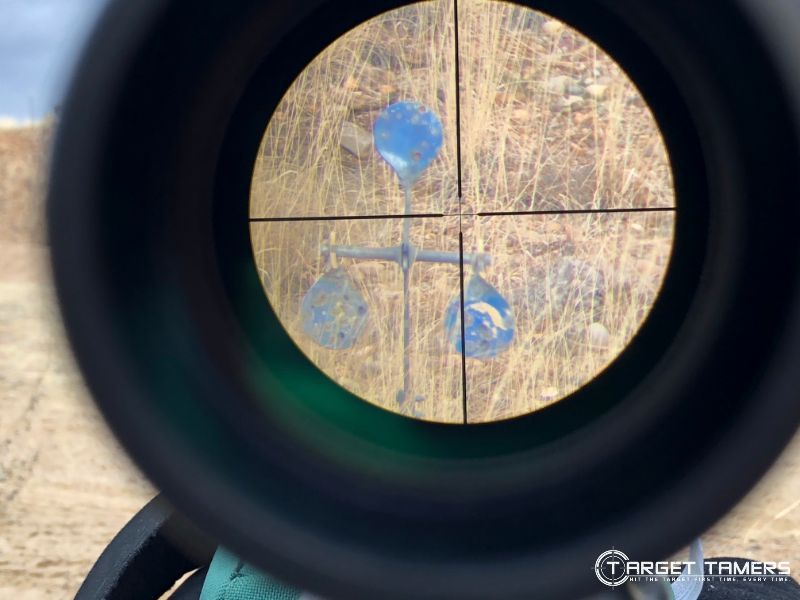
Swarvoclean HD Optics - This is Swarovski's anti-scratch and easy-to-clean technology that keeps their HD optics in tip-top shape.
T
Terra RZ 6 - Zeiss' ballisitc reticle for the Terra series rifle scope for standard, non-magnum hunting calibers. (See also Ballistic Reticle)
Terra RZ 8 - Zeiss' ballistic reticle for the Terra series rifle scope for magnum hunting calibers. (See also Ballistic Reticle)
TrueZero - Simmon's turret locking technology to ensure the scope holds zero during heavy and repeated recoil.
Turrets - These are used interchangeably throughout the rifle scope articles as turrets, knobs, and dials. They are the external and protruding parts that control elevation and windage scope adjustments. Turrets can also refer to other mechanisms such as ballistic turrets, side focus, and an illumination control.
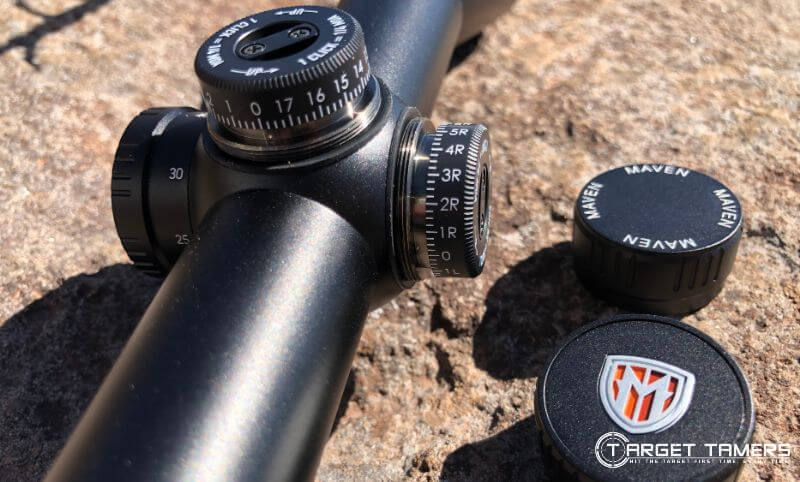
U
Ultra ClearCoat Optical System - Nikon's technology to provide you with clear image quality and high light transmission capacity.
V
Variable Power - This means the magnification of the rifle scope is not fixed, it's variable. It can range from as low as 1.5-4X or as high as 6-24X in a rifle scope, and sometimes even higher. The most common variable power specs for a hunter is the popular 3-9X.
Varmint - Varmint hunting is the targeting of small mammals (vermin) by hunters for purposes such as pest control. Varmint can also be used to identify a type of rifle such as a .22 rifle. It can also be a category of rifle scopes and reticles for an optics company.
Varminter - This is used by optics companies to identify a specific line or series of rifle scopes. This term can also be used to identify a type of reticle designed specifically for targeting small animals. These varmint/varminter reticles are typically made for close range hunting but can be incorporated into long range hunting reticles.
VX - Leupold's acronym for variable power.
W
Weaver - This is an American sporting optics brand. It is also the name for a type of mounting base design to attach a scope to the barrel of a rifle. Two piece rings are best used on this mounting base, and since the cross slots are not uniform, you should ensure you're using the right size rings and rail to prevent slop (scope movement within the mount). (See also Picatinny and Dovetail)
Windage - This is the horizontal cross hair of the reticle.
X, Y
X96 Reticle - This is Burris' illuminated and very intuitive "Christmas tree" style ballistic reticle. (See also Ballistic Reticle)
XD Lens Elements - XD stands for Extra-low Dispersion in relation to Vortex's glass technology to provide outstanding image quality.
XR Coatings - This is Vortex's proprietary fully multi-coated coatings that reduce glare and reflection and increase brightness and clarity. (See also Coatings)
Z
ZeroStop - This is NightForce's name for their technology that gets you back to your original zero in a jiffy. (See also Original Zero)
Further Reading

